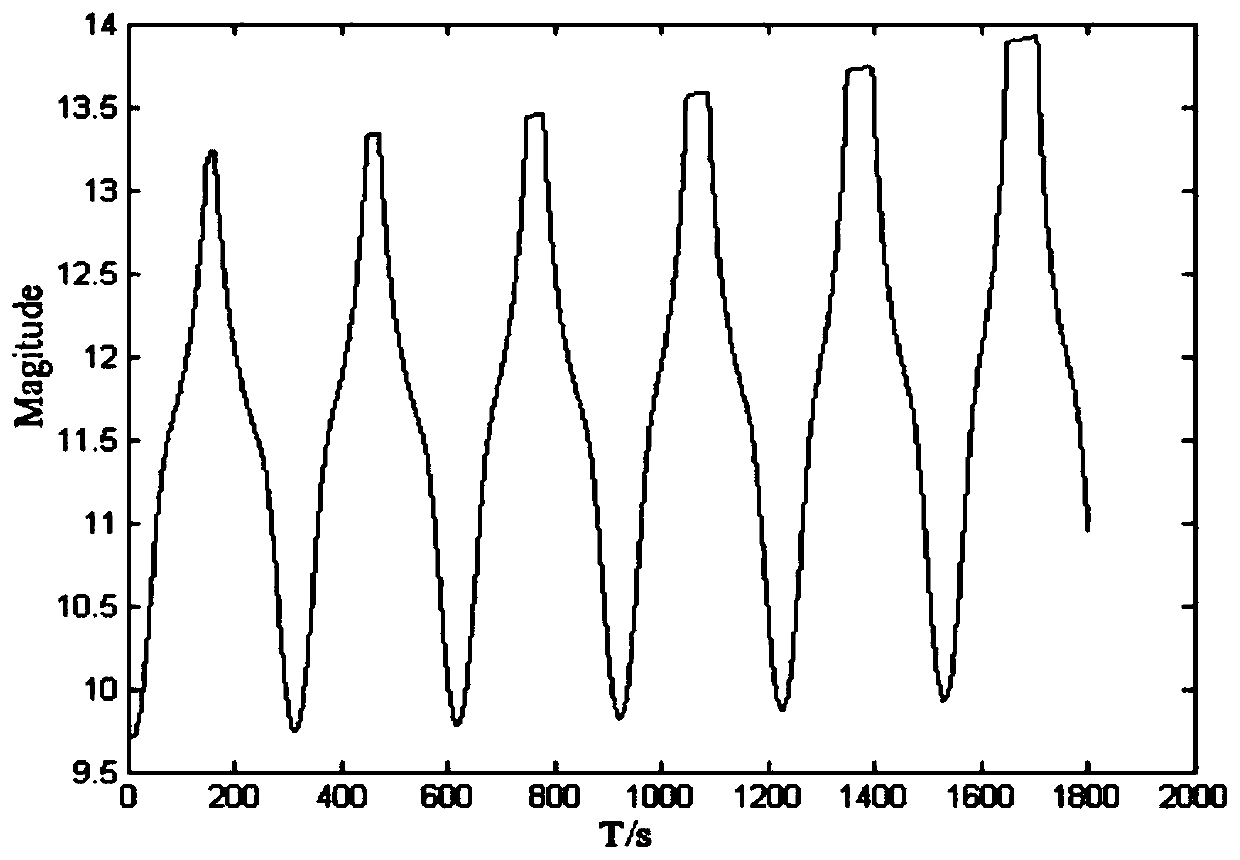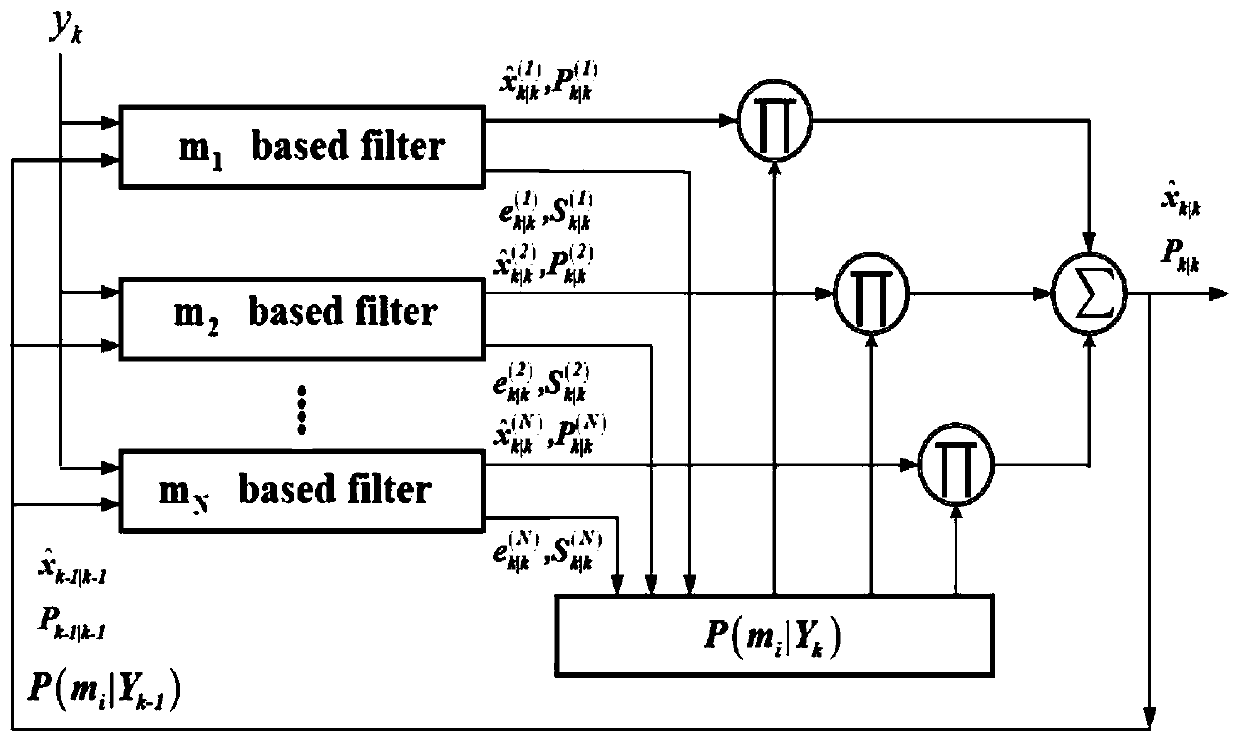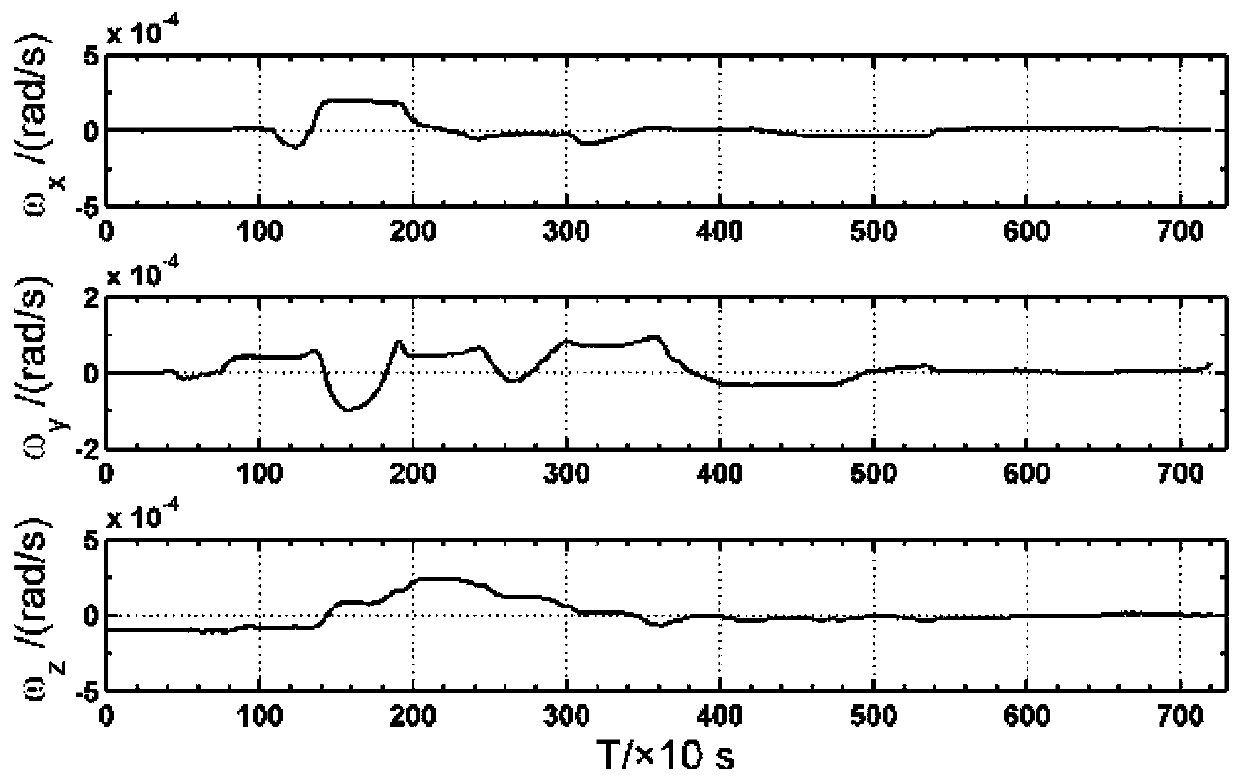Feature Recognition Method for Space High Orbit Small Size Target Based on Photometric Curve
A technology of target features and photometric curves, applied in the direction of optical device exploration, etc., can solve the problems affecting target feature recognition, effective estimation of light pressure terms, and difficulty in effectively estimating target position and speed, so as to ensure effective identification capabilities and avoid difficult convergence. , to ensure the effect of convergence ability
- Summary
- Abstract
- Description
- Claims
- Application Information
AI Technical Summary
Problems solved by technology
Method used
Image
Examples
Embodiment 1
[0093] The present invention is further described in conjunction with a specific example of the shape recognition of a quadrangular prism satellite, and the fast convergence of the feature recognition algorithm for space high-orbit small-size targets based on photometric curves is realized. The basic simulation environment is set as follows: the target is a satellite in geosynchronous orbit, the orbital inclination is 30°, and the satellite is at 120° longitude; Ease of availability data, other data are given by STK. In addition to the need to change the corresponding parameters related to the design of the model set, the area of each surface is generally 60m 2 ; diff = 0.4, R spec = 0.5. The start time of the simulation is 05:00:00UT on May 22, 2015, and the end time of the simulation is 07:00:00UT on May 22, 2015.
[0094] According to the algorithm of the present invention, the steps of feature recognition are as follows:
[0095] The first step is to calculate the p...
Embodiment 2
[0119] Size estimate:
[0120] The estimation of different sizes under the same shape model is realized by the multi-model adaptive estimation method, so the design of the model set is about the design of the size parameters, and other parameters are consistent with the single model. The shape is selected as a quadrangular prism, and each model set is composed of 5 possible sizes. The size parameter is represented by the area of the six faces in the shape. The real model is A=[6060 60 60 60 60], which will consider the real model contained in Model focus.
[0121] The real model contained in the model set is designed as:
[0122] Model 1: A=[60 60 60 60 60 60]
[0123] Model 2: A=[60 60 120 60 120 60]
[0124] Model 3: A=[60 60 60 120 60 120]
[0125] Model 4: A=[30 30 30 30 30 30]
[0126] Model 5: A=[120 120 120 120 120 120]
[0127] In the simulation, the photometric data comes from model 1, that is, model 1 is the real model; Image 6 are the angular velocity esti...
Embodiment 3
[0129] Material parameter estimation:
[0130] The estimation of the material parameters under the same shape model is realized by the multi-model adaptive estimation method, so the design of the model set is about the design of the material parameters, and other parameters are consistent with the single model. The shape model is selected as a quadrangular prism shape, and 5 size models are designed for the model set. Because the A-S model is selected for measurement and modeling in this paper, the material parameters are selected from the parameters in the A-S model. Here, n is selected. v and n u Perform model set design.
[0131] Model 1: n u =[10 10 10 10 10 10], n v =[10 10 10 10 10 10]
[0132] Model two: n u =[10 10 10 10 10 10], n v =[5 5 5 5 5 5]
[0133] Model three: n u = [5 5 5 5 5 5], n v =[10 10 10 10 10 10]
[0134] Model four: n u = [5 5 5 5 5 5], n v =[5 5 5 5 5 5]
[0135] Model five: n u = [20 20 20 20 20 20], n v =[5 5 5 5 5 5]
[0136] In t...
PUM
 Login to View More
Login to View More Abstract
Description
Claims
Application Information
 Login to View More
Login to View More - R&D
- Intellectual Property
- Life Sciences
- Materials
- Tech Scout
- Unparalleled Data Quality
- Higher Quality Content
- 60% Fewer Hallucinations
Browse by: Latest US Patents, China's latest patents, Technical Efficacy Thesaurus, Application Domain, Technology Topic, Popular Technical Reports.
© 2025 PatSnap. All rights reserved.Legal|Privacy policy|Modern Slavery Act Transparency Statement|Sitemap|About US| Contact US: help@patsnap.com



